#Prey 14.9
Explore tagged Tumblr posts
Text
The knife cut the girl more than it cut me. I could feel it raking across the exterior of my costume, failing to penetrate,
I thought The Cutting Edgelord could cut anything? Or is it just that he cuts at range. If so, that's actually really lame.
#Kylia Reads Worm#Prey 14.9#Jack Slash#Then again his real power isn't his cutting it's how [Broadcast] Cheats
9 notes
·
View notes
Text
Species: Foxes (Vulpes)
This series focuses on helping people choose interesting species for their fursona through informing them of the many, often overlooked, species out there! This post is about foxes.
──── ◉ ────
Bengal Fox (Vulpes bengalensis)

Size: 46cm (18in) lenght, 25cm (10in) tail lenght, 2.3-4.1kg (5-9lbs) weight
Diet: omnivorous, preys on invertebrates, small mammals, birds, reptiles; eats fruit
Habitat: scrublands, deciduous forests, grasslands
Range:
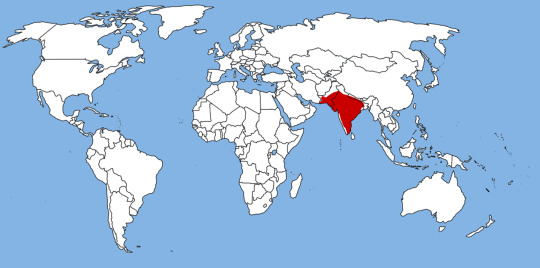
Status: least concern
──── ◉ ────
Blansford's Fox (Vulpes cana)
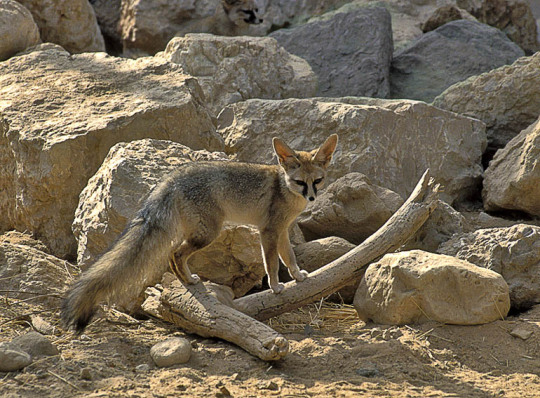
Size: 38-80cm (15-31in) lenght, 33-41cm (13-16in) tail lenght, 0.8kg (1.7lbs) weight
Diet: omnivorous, preys on invertebrates; eats capers, fruit
Habitat: mountainous deserts
Range:
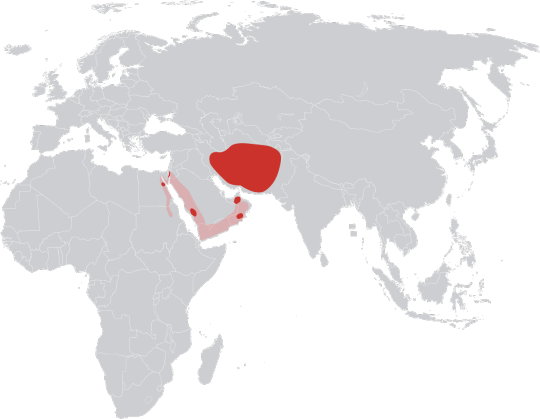
Status: least concern
──── ◉ ────
Cape Fox (Vulpes chama)

Size: 30-35cm (12-14in) height (at shoulder), 45-60cm (17.5-24.5in) lenght, 30-40cm (12-15.5in) tail lenght, 2.5-4.5kg (5.5-9.9lbs) weight
Diet: omnivorous, preys on small mammals, invertebrates, birds, reptiles; eats carrion, fruit, tubers
Habitat: savannahs, dry grasslands
Range:

Status: least concern
──── ◉ ────
Corsac Fox (Vulpes corsac)
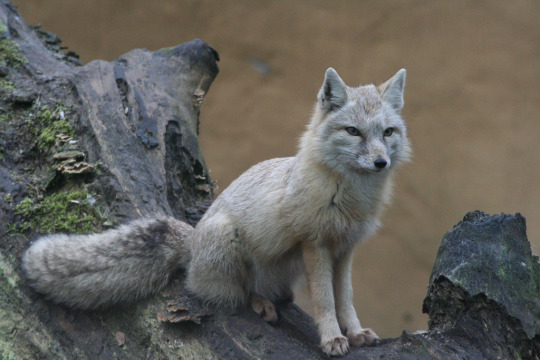
Size: 45-65cm (18-26in) lenght, 19-35cm (7.5-13.8in) tail lenght, 1.6-3.2kg (3.5-7.1lbs) weight
Diet: mostly carnivorous, eats small mammals, invertebrates; eats carrion
Habitat: steppes, semideserts
Range:
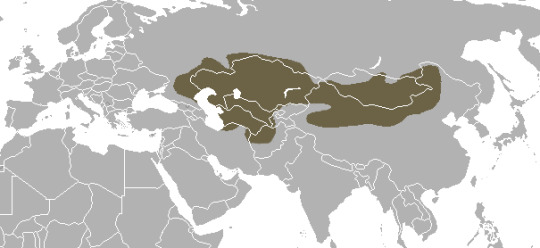
Status: least concern
Please note! The corsac fox has 3 subspecies!
──── ◉ ────
Tibetan Fox (Vulpes ferrilata)

Size: 60-70cm (24-28in) lenght, 29-40cm (11-16in) tail lenght, 4-5.5kg (8.8-12.1lbs) weight
Diet: carnivorous, preys on small mammals, reptiles; eats carrion
Habitat: semi-arid and arid grasslands
Range:

Status: least concern
──── ◉ ────
Arctic Fox (Vulpes lagopus)
Winter coat

Summer coat

Size: 25-30cm (9.8-11.8in) height (at shoulder), 41-68cm (16-27in) lenght, 30cm (12in) tail lenght, 1.4-9.4kg (3.1-20.7lbs) weight
Diet: omnivorous, preys on small mammals, fish, birds, invertebrates; eats carrion, berries, seaweed
Habitat: tundra, drift ice, boreal forests
Range:

Status: least concern
Please note! The arctic fox has 5 subspecies!
──── ◉ ────
Kit Fox (Vulpes macrotis)
The kit fox has 2 subspecies:
Vulpes macrotis macrotis

San Joaquin Kit Fox (Vulpes macrotis mutica)

Size: 45-53cm (17.9-21.1in) lenght, 26-32cm (10.2-12.7in) tail lenght, 1.6-2.7kg (3.5-6lbs) weight
Diet: mostly carnivorous, preys on small mammals, reptiles, invertebrates, fish; eats carrion
Habitat: desert scrubs, shrublands, grasslands
Range:
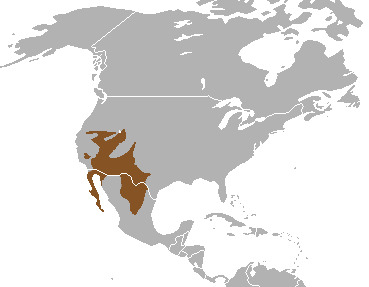
Status: least concern (V. m. macrotis), endangered (V. m. mutica)
──── ◉ ────
Pale Fox (Vulpes pallida)
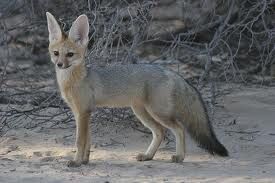
Size: 38-55cm (14.9-21.6in) lenght, 23-29cm (9-11.4in) tail lenght, 2-3.6kg (4.4-7.9lbs) weight
Diet: omnivorous, preys on rodents, reptiles, invertebrates; eats berries, other plants
Habitat: semideserts, savannahs
Range:

Status: least concern
Please note! The pale fox has 5 subspecies!
──── ◉ ────
Rüppell's Fox (Vulpes rueppellii)
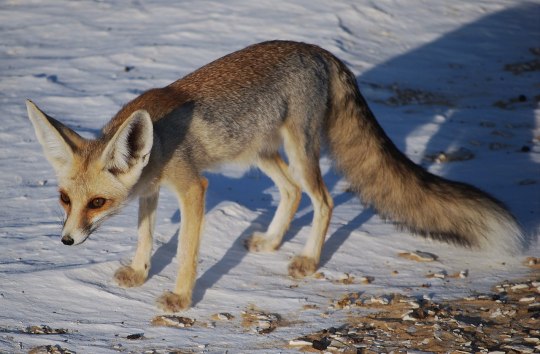
Size: 66-74cm (26-29in) lenght including 27-30cm (11-12in) tail lenght, 1.7kg (3.7lbs) weight
Diet: omnivorous, preys on small mammals, invertebrates, reptiles, birds; eats fruit, succulents
Habitat: sandy and rocky deserts, semiarid steppes, scrublands
Range:

Status: least concern
Please note! The rüppell's fox may have 5 subspecies (it is debated)!
──── ◉ ────
Swift Fox (Vulpes velox)
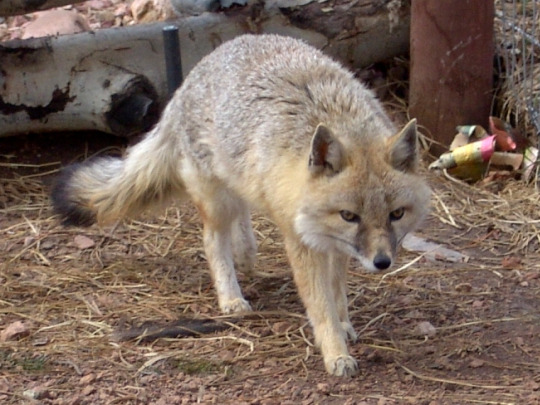
Size: 30cm (12in) height (at shoulder), 79cm (31in) lenght including tail
Diet: omnivorous, preys on small mammals, invertebrates; eats carrion, fruit, grasses
Habitat: prairies, deserts, grasslands
Range:

Status: least concern
──── ◉ ────
Red Fox (Vulpes vulpes)
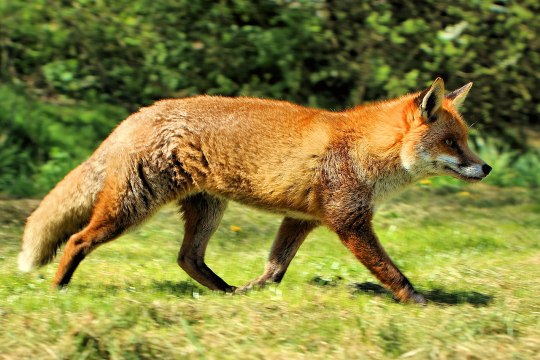
Size: 35-50cm (14-20in) height (at shoulder), 45-90cm (18-35in) lenght, 30-55.5cm (11.8-21.9in) tail lenght, 2.2-14kg (5-31lbs) weight
Diet: omnivorous, varied; preys on small mammals, birds, reptiles, invertebrates; eats carrion, berries, fruit, other plant material
Habitat: Literally Everywhere My God™
Range (green native, blue introduced, orange uncertain):
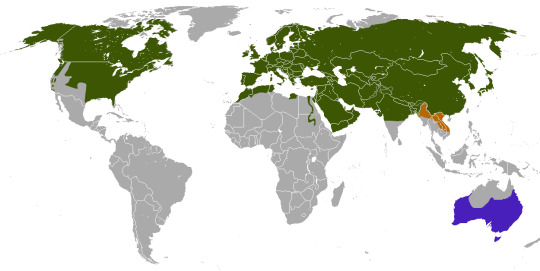
Status: least concern
Please note! The red fox has 45 subspecies!
Of which I would like to highlight:
Labrador Fox (Vulpes vulpes bangsi)

Arabian Red Fox (Vulpes vulpes arabica)
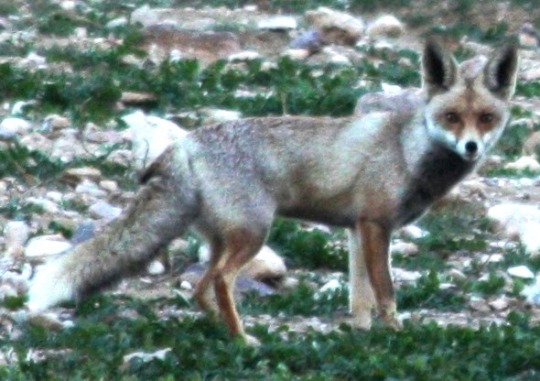
Kodiak Fox (Vulpes vulpes harrimani)
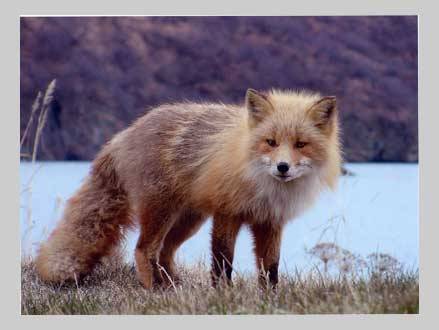
American Red Fox (Vulpes vulpes fulva)
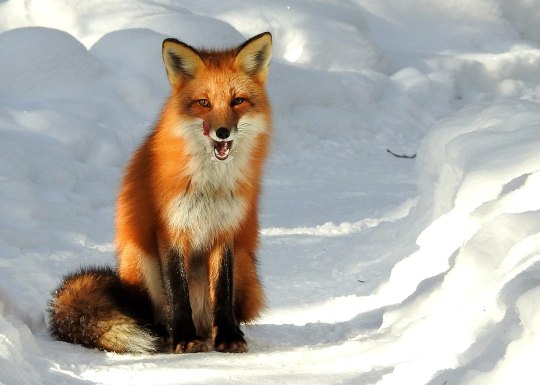
Please also note, there is color variation among red foxes regardless of subspecies
──── ◉ ────
Fennec Fox (Vulpes zerda)

Size: 34.5-39.5cm (13.6-15.6in) lenght, 23-25cm (9.1-9.8in) tail lenght, 1-1.9kg (2.2-4.2lbs) weight
Diet: omnivorous, preys on small rodents, reptiles, invertebrates; eats fruit, tubers
Habitat: deserts
Range:

Status: least concern
──── ◉ ────
#fursona resources#species#furry#fursona#fox#foxes#mammals#canidae#canines#vulpes#bengal fox#blansford's fox#cape fox#corsac fox#tibetan fox#arctic fox#kit fox#pale fox#rüppell's fox#swift fox#red fox#fennec fox
7 notes
·
View notes
Text
been thinking about this a bit more. it IS a lot more interesting for synthetic meat to not exist so let’s justify that shall we? below the cut
tw: suicide mention, mathematics
here in the real world, we mapped out the entire human genome via the human genome project (which imo could be the foundation for a ‘synthetic meat’ (please bear with me i’m getting there)), but i imagine it’s not so simple in tokyo ghoul due to V’s interference and desire to continue the war between humans and ghouls.
V despises ‘advancement’ and loves ‘control’. They probably killed off or indoctrinated the key figures necessary for the project to go underway. picking out the seeds before they could sprout and all that. not only that, the mere existence of ghouls means that there are resources pooled into defense against them, and also maybe even some historical figures were ghouls themselves. either way, history, in the context of humans learning more about themselves, diverges heavily because of that. so synthetic meat does not exist in people’s minds.
“what about cochlea food” it’s dead investigator meat with rc suppressants. probably leftovers from kaiko’s expeditions to feed the washuu. (this is part of the reason why aogiri only feeds on investigator meat)
so we’re left with the unsustainable model of “kill somebody”. there is no model in which ghouls win in coexistence if we wanna play the morality card. lowering their “one body a month” thing is asking them to give up on their end. it’s a concession, similar to anteiku’s policy, only arguably worse because it’s basically mass starvation.
“what about suicide victims” we don’t know the exact ratio of humans to ghouls but i don’t think suicide rates are high enough to feed every single ghoul on the planet regularly. Using Japan as an example, in 2017, their population was around 127 million people, and according to wikipedia, their suicide rate that same year was around 14.9 per 100,000 people, which makes 18,923 victims. Of course, this isn’t accurate for the world of TG given the CCG’s existence and also, well, ghouls, but 18,923 suicide victims only feeds around 1577 ghouls. Considering our global population of like 7 billion, the ratio of ghouls to humans would have to be minuscule to allow that to be sustainable. And this rate is one of the higher rates, standing at number 7 (that’s horrible)!
and even if it were “sustainable”, what about the family members of the victims? don’t they get a say in what happens to the body of their loved one? why should the body be made into a meal, only to be shit out by the ghoul who eats it not even a month later? could you imagine having to deal with that? i wouldn’t wish it on my worst enemy.
tens of millions of people die a year, but we run into the same problem as the suicide victims with families. some people will want burials, ashes, et cetera. unless we popularize ritual ghoul shitting to make sure that ONLY THE PERSON WHO DIED IS IN THERE AND NOT JERRY FROM ACROSS TOWN.
once again: ghouls giving up their autonomy for humans.
this is why the ccg exists. why V exists. why it’s so easy to continue to exterminate ghouls without human pushback. humans can play the victim card every. single. time. they don’t eat ghouls back so they are just prey. they are victims and so they are helpless. ghouls are predators by nature. there is no version of coexistence where ghouls come out on top or even on equal footing with humans. perhaps some humans take pity on them, try to advocate for their rights. but ghouls. eat. humans. they even eat each other sometimes. it is an undesputable fact about them, the one thing that is true. it is impossible to ignore the brutality and horror that is consuming a sentient being.
but… ghouls have to eat. they have to feed. they have to take. protect. err. lose. because that is the world they live in every day, for the rest of their lives.
a world that is wrong.
yea ok it makes sense that they would eventually develop synthetic foods for ghouls to eat but i feel like that undermines the themes of the series?? it wouldve been much more interesting to see ghouls and humans coexist while ghouls still gotta eat yknow???
#or something like that#BRAIN….#bearing tragedy on their backs until it breaks: that is the ghoul life#tg meta
27 notes
·
View notes
Text
Arc Thoughts: Prey
In which everyone hunts everyone else.
There’s one big question Arc 14 of Worm has left me with: How do these Arcs just keep getting better?
I mean seriously, let’s look back at the progression in this Arc:
14.1: In which we got attempted mind games from Cherish and learned that someone among the Undertravelers (probably Trickster) has a potentially lethally upsetting secret. Only one of the weakest chapters in the Arc because the rest were so good.
14.2: Solid rescue operation of one of my favorite characters from Siberian.
14.3: Epic chase scene, and excellent Amy development.
14.4: In which Jemily Piggot is delightfully devious and Amy continues to be fantastic with her latest contribution of Atlas the giant beetle.
14.5: Taylor and Weld fighting together nearly seamlessly, big asshole kitty getting some much-needed attention, fantastic tension as the Undertravelers try to escape the blast zone, Taylor learns to fly... So much good stuff.
14.6: That Amy and Victoria scene was so good! Honorary mentions: Taylor’s tangent about eating bugs and Regent being beautifully on the ball.
14.7: Some pacing/tension issues drag this one down, but the descriptions of the Bakuda barrage was amazing.
14.8: AND THIS IS WHERE THE ARC WENT FROM GOOD TO FUCKING AMAZING. The miasma is one of the best concepts Bonesaw could drop on the city and I love it so damn much. Honorary mention: Sundancer’s spiel on being alone and the way it ties in beautifully with what was about to happen to her and everyone else.
14.9: AND THEN IT JUST GOT EVEN BETTER (even if I was being a bit of a dunce)
14.10: Really good dialogue between Jack and Amy as he tried to get her to betray her morals and join up, followed by a pretty good hallway knife/gun-- wait a minute. Jack. Literally brought a knife to a gun fight. Or was it Taylor who brought a gun to a knife fight?
14.11: Well that’s certainly a way to go about curing Rachel and Lisa! And then there’s Jack’s parting message and Cherish’s fate.
Interlude 14: Sierra Interlude? Don’t mind if I do! I had some trouble getting through the earlier parts of the Interlude but once Taylor showed up things got really good.
Interlude 14.5: LEGEND IS SO GOOD FOR KID WIN. Shame they’re probably not getting another chance to talk. ...oh yeah, and the Triumvirate are working with Cauldron despite two of them apparently knowing what’s up. That’s a pretty good curveball reveal. BUT KID WIN GUYS
In short, really fucking good Arc. Quite possibly the best one so far, even!
This was the climax to the Slaughterhouse Nine plotline (though Jack at least will likely become relevant again when we find out how he dooms the world), which has been going for 3.5 (or 5, depending where you count from) Arcs now, and I really think Wildbow nailed it. The miasma was a really amazing way to end this sequence, and I appreciate just how unwilling the Nine were to give in, how much they had to be whittled down before they left - it made it feel like this was an amazing accomplishment by the protagonists even though the core of Nine ultimately got away.
Even if Taylor doesn’t feel that way. Taylor is weird about acknowledging her accomplishments, though it all makes perfect sense with regards to her character.
The Arc title
Everyone was indeed Prey, except maybe the Protectorate. And even they were caught in the miasma.
The Undertravelers hunted Siberian, who hunted Amy. The PRT/Piggot hunted the Nine and the Undertravelers, and when parts of the Nine slipped away from the Protectorate, the Undertravelers took up that hunt (after being Crawler’s and the PRT’s prey at the same time), while Legend was hunting Siberian. And so it went on until the miasma struck and made everyone downtown the Nine’s prey in a sense (not that that’s much of a change from the norm), as well as feel like everyone else’s prey. Jack tried to prey on Amy’s insecurities. Then we had Taylor hunting the Nine again at the end, though they ultimately got away.
Sierra and Charlotte avoided the miasma and even they ended up as prey for the metaphorical ravens.
Prediction review
Rolling over all the way from Arc Thoughts: Infestation:
And, if someone attempts to kill Jack Slash, they will either fail, or do it too late.
Yeeah, nobody succeeded at that. Anyone who manages to do it later in the story will be too late according to Dinah. I’m going to consider this one proven correct.
And now for predictions from Arc Thoughts: Snare:
Due to an accident while writing the End of Interlude 13 post yesterday, I know the title, or original title if it has been changed, of Arc 14: Prey.
Who’s the prey, exactly? After hearing Piggot’s plan, I’m inclined to think it’s both the local villains and the Slaughterhouse Nine. The Nine are at the bottom of the parahuman food chain for a change, being hunted by the Undertravelers and the Protectorate, but the PRT is also hunting the Undertravelers and other local villains.
I suppose there’s still civilians under the Nine on the overall food chain, but the Nine have already been preying on them quite a lot, so that shouldn’t be enough for an Arc title.
…oh. Oh, right.
I was already going to predict that Siberian was going to be in the spotlight next Arc, because of the focus she got in Interlude 13. Of course that ties in with the title Prey. She’s probably the next tester, which means the nominees are going to be her prey.
That doesn’t invalidate the other interpretation, though. I’m inclined to think both are correct.
I think I was right here, except I was thinking too specifically. I later added that everyone’s prey, in the chapter thoughts of 14.1.
So is the next Arc going to give the spotlight to only Siberian, among the Nine? The Nine’s numbers have been reduced enough that Wildbow can do that now, especially if they continue being reduced.
No. At the time I was writing this, I still thought the plotline might go on for a bunch more Arcs.
I don’t think the Undertravelers are going to let up on their ongoing assault against the Nine, but Taylor might start being a tad more cautious thanks to Grue’s input. Maybe that’s what ends up saving them from the Protectorate’s explosive backstab?
I haven’t really seen her be that notably more cautious, really. And the thing that ended up saving them was Piggot tipping her hand while making sure they’d all go into the blast zone.
And finally, I think there’s a good chance we’ll finally learn what the Travelers’ deal is. Hell, if my theories on that are anywhere near right, that might even be another reason for the title.
Not yet, but we’re definitely building up to it, what with the massive secret and the Sundancer development. Roll over.
From a post made shortly after Arc Thoughts: Snare:
Oh yeah, one more prediction for Prey: I suspect one or more of the minor protagonists is/are going to die to Siberian, or at least get mauled. Maybe even one of the major protagonists. This would mirror the Case 01 video, perhaps even closely.
The Nine have actually been remarkably non-lethal to the named characters. They’ve slayed hundreds, maybe thousands of redshirts civilians, but only, what, five characters whose names we knew? Four of which were incredibly unsympathetic? Though some more may have died in the miasma.
Predictions for Arc 15 before reading the title
This is a hard one. There’s not much to go on as far as where the story is headed next.
It’s possible we’re about to learn more about the Travelers, but I doubt that’s the main plot. Likewise, I don’t think dealing with the Chosen is that big of a deal for Taylor at this point, especially since they’ve lost their leader.
It is also very possible that we’re heading into the second boss battle Arc, though it’d be a bit curious that no strong indication of that (except Eidolon mentioning that another Endbringer strike was due soon) appeared at the end of Prey like what happened at the end of Buzz. If we are heading into that territory next Arc or in Arc 16, I think we’re in for the Simurgh attacking Brockton Bay.
If she does, we might see some of the characters start to question why two Endbringers would attack the same location in a row like that, lending more credibility to Coil’s “Noelle draws Endbringers” theory.
I suppose it’s also entirely possible that the miasma was the boss battle of this section and we’re not getting attacked by all three Endbringers like I’ve been theorizing, in which case we’d be moving into an Interlude Arc.
But that’d feel kind of anticlimactic, even though Prey was a fantastic climax to the Slaughterhouse Nine plotline, and unless the chapters in the Interlude Arc were themed like the ones in Sentinel, it’d call into question why we had two Interludes in Prey. Though that can still be explained by thematics and threads, wanting Legend’s Interlude to be clearly tied to Prey.
So yeah, I’m not really sure what to expect. Let’s see if the Arc title gives me any ideas, shall we?
Predictions for Arc 14: Colony
Colony. That, to me, sounds like we’ll be focusing on the rebuilding of Taylor’s territory and its community for a while. Maybe all the territories, even, turning the city into the Undertravelers’ colony?
But that sounds like a really anticlimactic premise on its own. We may focus on that, but something needs to not go smoothly to make the Arc interesting. It needs more conflict than just “how do we fix up this building”. Dealing with the Chosen still doesn’t sound all that interesting after tangoing with the Nine.
I’m not saying I expect the upcoming Arc to be boring. I’m saying that if I’m right about what the title implies, I don’t really know how Wildbow is going to prevent that. I do trust that he will, though, in some way.
Perhaps the title is less literal. Maybe it’s about the cohesiveness and cooperation as the heavily hurt and fractured people of Brockton Bay band together to defend their colony, their home, against the Simurgh or another threat?
Or maybe it’s a colony in the sense of an additional area taken and controlled from afar? But I can’t imagine Taylor wants to take another piece of territory, away from her current one.
This next Arc is very hard to speculate on, jeez. In any case, I’m looking forward to starting on it and finding out what’s actually going on. See you soon!
20 notes
·
View notes
Text
2021年 ロットハンブルグ大賞(G3) レース結果と動画
ロットハンブルグ大賞Grosser Preis Von LOTTO Hamburg G3 2021/07/02 ハンブルク競馬場 8R 芝1200 10頭立て 馬場状態:Soft 3歳以上 2021年 ロットハンブルグ大賞(G3) レース結果 着順 枠番 馬番 馬名 性齢 斤量 騎手 調教師 オッズ 人気 タイム着差 1 6 1 マジェスティックコルトMajestic Colt 牡6 59 E.ペドロサEduardo Pedroza A.ヴェーラーA Wohler 3.3 1 1:12.24 2 8 3 call me mister セ6 57 B.ムルザバエフBauyrzhan Murzabayev H Blume 14.9 6 クビ 3 3 11 dibujaba 牝3 53 S.フォークトSibylle Vogt P.シールゲンP…

View On WordPress
0 notes
Text
Scientists Are Surprised by What Great White Sharks Are Actually Eating
https://sciencespies.com/nature/scientists-are-surprised-by-what-great-white-sharks-are-actually-eating/
Scientists Are Surprised by What Great White Sharks Are Actually Eating

Knowing more about what sharks eat is crucial in managing how we interact with them, and a new study looking at the diet of great white sharks off the east Australian coast has revealed some surprising findings.
Based on a detailed analysis of shark stomach contents, these apex predators spend a lot more time than we thought feeding down at the bottom of the sea bed, rather than gliding along the top of the water, looking for prey.
Scientists looked at the digested meals of 40 juvenile great whites (Carcharodon carcharias), and discovered plenty of fish species known for living on the seafloor or hanging out buried in the sand down in the depths.
“The stereotype of a shark’s dorsal fin above the surface as it hunts is probably not a very accurate picture,” says ecologist Richard Grainger, from the University of Sydney.
“This evidence matches data we have from tagging white sharks that shows them spending a lot of time many metres below the surface.”
Not only can the diet analysis tell researchers more about what great white sharks like to snack on, they also provide a window into the migratory habits of these creatures: where they’re eating and why they might have to move around.
On average, the shark diets consisted of 32 percent mid-water ocean swimming fish (such as Australian salmon), 17.4 percent bottom-dwelling fish (such as stargazers), 14.9 percent batoid fish that lurk on the seafloor (such as stingrays), and 5 percent reef fish (such as eastern blue gropers).
The rest of the stomach contents was made up of unidentified or less abundant groups of fish. Marine mammals, other sharks, squids and cuttlefish also occasionally form part of the diet of a juvenile great white shark, according to the researchers.
“This fits with a lot of other research we’ve done showing that wild animals, including predators, select diets precisely balanced to meet their nutrient needs,” says ecologist David Raubenheimer, from the University of Sydney.

Study author Richard Grainger and the contents of a white shark’s stomach. (University of Sydney)
The team compared their findings with other collected data to try and understand what kind of nutrients the sharks are looking for. That could in turn tell us more about where they like to live, and how human activity can interfere with that.
As sharks get older, they tend to move around more, for example – and take on board more fat in their diet to help power these journeys. Diet and migration are closely linked, and while these new data are based on a relatively small sample, it can be combined with movement records from great whites that have been electronically tagged.
The researchers are calling for more work to be done to analyse the exact nutritional composition of shark diets – not just the calorific content – in order to understand the relationship between their physiology, behaviour and ecology.
“Understanding the nutritional goals of these cryptic predators and how these relate to migration patterns will give insights into what drives human-shark conflict and how we can best protect this species,” says ecologist Gabriel Machovsky-Capuska, from the University of Sydney.
The research has been published in Frontiers in Marine Science.
#Nature
0 notes
Text
Female Hyena Facts

Hyenas live in a female dominated society. Female Hyenas are the most masculine females in the animal kingdom TBH. They have very high levels of hormones that are usually found in the males. Also many female hyenas have enlarged clitoris, to the point of looking like a penis. The female hyena urinates, mates and gives birth through this modified clitoris (it is inverted for mating). Some of thee videos you might see on Youtube in 4K HDR on this topic SMH might be truthfully NSFW. The hyena is a vicious creature.

Wild Hyena Hyenas are doglike carnivores (though not a dog nor a wolf) which have skulls and sagittal crest for attachment of jaws that are dominant, the premolars that are blunt and 32 34 tooth for breaking bones, specialised. The hyena kind of looks like the ever elusive Tasmanian Tiger Wolf just a little bit at least. Three of those hyena species are known to us the Brown hyena, the laughing or Spotted hyena and the one, and the Striped hyena. Sub Saharan Africa whilst the one is located in the hyena and the Africa lives throughout northeastern Africa, Asia Minor, India, along with Africa is inhabited by the hyena. Strong strong jaws, massive heads, and hooked tooth explain a lot about hyenas behavior and foraging techniques. They can crack the marrow bones with their teeth. They've their shoulders being higher in contrast to hindquarters and big ears. They've a tail that is 1 foot long, and their foot that is brief is accompanied with five toes. The spotted hyena stands three feet high at the shoulder, could be long as 6 feet in its head and body length and weighs around 200 lbs. The male is bigger than the female. Lets enjoy a few of the most intriguing hyena facts for kids. Hyena Facts For Children - Distinctive Coats - All of the 3 hyena species are distinguishable from one another. The hyena greyish and shows a dark body. It's unusually long and dense coat. Striped hyena's grey and yellowish coat is marked by its stripes. The forepaws are adapted for burrowing meat out of caches written by carnivores. Both these species are portrayed by their long haired manes. The spotted hyena is the biggest species of hyena. The brief and sparse coat of spotted hyena varies from yellow to tawny buff and is indicated by brown or black spots. Hyenas in most cases of the day spend some time at ground holes, at lairs, at caves, along with even in thick vegetation. Very fascinating species much like the moon bear or tibetan mastiff. Hyenas are almost completely nocturnal plus they seldom hunt by day. Spotted hyenas are often found in large clans of 100 people and have marked their territory by urinating either on trees or just on ground. The females have been bigger than the males. What's the Largest and the Most Aggressive Hyena? Spotted Hyena is by far the biggest and the most competitive hyena species. The head and body length of those species is 85 130 cm. Its hind legs are rather shorter than the forelimbs thus causing the back to slope downwards. Unlike spotted hyenas, striped hyenas are located in small groups of 1 2 creatures, though up to seven groups have been also known. Distribution - Hyena scavenges from those open savanna zones and those arid lands of sub Saharan Africa, those striped hyenas move in those forests of North Africa and Asia. The population of brown hyena is relativame limited to the southern Africa. Spotted Hyena They've a body length of 1.3 m, a tail length of 25 cms plus they weigh between 62 and 70 kgs. Their coat is short and it is sandy to grey\/brown in color with black spots. The hair on their neck and rear slopes when the hyena becomes excited, and it stands on end. Spotted Hyenas are strongly built animals plus they've a large neck and head. Their ears are short and rounded plus they've extremely strong jaws. Their front legs are longer than their hind that gives their back an appearance. Their legs have four toes with toe pads that are wide and non retractable claws. Females are hard to distinguish because of them having enlarged organs from men. They're frequently displayed in meeting ceremonies to strengthen social bonds and hierarchies. Spotted Hyenas are strong swimmers plus they can travel at speeds of 50 km\/hr for 3 kms. They're very vocal creatures with over 11 calls and they. Their calls include whoops to show a clan member entry or locate soft squeals once greeting another member of the group, cubs, and the hyena laugh that is or to rally the group. Habitat - Spotted Hyenas are located on the prey savannahs of Africa. Their structure is dominated they live in clans - 80 members. They leave their clan when men reach maturity, but females remain to. They share a communal den along with latrine plus they occupy a territory of 40 - 1, 000 sq. Kms are born in a birthing den. At birth their cubs weigh between 1 and 1.6 kgs, they're black in color, their eyes are open and their tooth are fully developed. In case their cubs are of their same sex, right after birth they begin violent fighting which frequently results in their death of one of them. They're one of the few mammals to perpetrate neonatal siblicide and it's estimated to contribute to 25% of hyena cub mortality. Spotted Hyena milk is very rich with a protein content of 14.9% along with a fat content of 14.1%, so unlike lions (vividly depicted in The Lion King) along with wild dogs, spotted hyena puppies could go for several days between feeds. Females have sole liability for rearing the cubs and once they're 2 - six weeks old their mother will move them to a communal den. Female Hyena Giving Birth There are different theories on how the female hyena conceives. However, there is one theory that is widely accepted and that is that female hyenas give birth after mating with a male. Although this process takes a long time to complete, the female in this case would be pregnant with a lot of offspring. This explains why you often see so many female hyenas eating other females when they reach maturity and they are pregnant. A few hyenas would have already given birth during their lifetimes, but usually a female that giving birth is definitely pregnant. There are times when a female has a litter of five to six young, but if she has already given birth to two or three young, it could be because she has already had several litters. Therefore, female hyenas that are pregnant or that are about to give birth should not be killed immediately as doing so may cause the death of her young. Before being killed, the mother is typically allowed to stand up and walk around a bit and then she is placed in a heated pool where she is sure to feel very comfortable. The female is given medication to control her high blood pressure before the killing process begins. After the procedure is over, the mother is placed into a cage with her young for the next few days, but the bonding between the mother and her offspring is not done with so much close contact as it would be with the mother and infant in the wild. This bonding is usually done with a method called "snuggle time." This technique is also used by the hyenas in the wild to bond with their offspring. Another method that is used to bond the mother and her offspring is "baby time." Although this is an older method and some consider it barbaric, some mother hyenas and their offspring have been known to use this technique. Eventhough the term "male mate" has been used to describe a female that is pregnant or giving birth, it is not accurate because a female will give birth to a young only when she has mated with a male. There is no reason to allow these mother hyenas to die and be slaughtered because they gave birth to their young. It is true that these mother hyenas are given more food during their pregnancies and feeding time, but it is a pity that they are killed for food when their young should not be eaten because they are healthy. Giving birth is what the female hyena does for a reason and therefore, killing them is inhumane. It is even worse if you were to place the mother hyena in a cage where she cannot even be near her young or she could be killed. We should learn how the mother gives birth and do our best to prevent them from being killed so that the young can be raised safely and well. Our purpose is to live in harmony with nature and to help other species survive in this world. https://youtu.be/MWpBe8EgNx4 Never miss any incredible pieces of information on other amazing creatures or places such as Caspian Sea, Belize Blue Hole, oldest woman in the world, tallest man, coldest city on Earth, the tundra, Thailand, Japan, hummingbirds, red panda, maned wolf, dolphins, cats, dogs, tigers, horses, and so much more. Read the full article
0 notes
Text
SINH TỒN TRONG CÂM LẶNG (The Silence)

youtube
5.2
The Silence (2019) 1h 30min | Horror, Thriller | 16 May 2019 (Germany)
Director: John R. LeonettiWriters: Carey Van Dyke, Shane Van DykeStars: Stanley Tucci, Kiernan Shipka, Miranda Otto
Summary: When the world is under attack from terrifying creatures who hunt their human prey by sound, 16-year old Ally Andrews (Kiernan Shipka), who lost her hearing at 13, and her family seek refuge in a remote haven.
Countries: GermanyLanguages: English, American Sign Language
Source: imdb.comDisclaimer: This plugin has been coded to automatically quote data from imdb.com. Not available for any other purpose. All showing data have a link to imdb.com. The user is responsible for any other use or change codes.
DVD5 CUSTOM
Hệ: NTSC Tỷ lệ: 16:9 Âm thanh: Anh (5.1), Tây Ban Nha (5.1) Phụ đề: Anh, Tây Ban Nha Thời lượng: 1:30:48 Menu: Có Extra: Không DOWNLOAD
[collapse]
DVD5 ViE CUSTOM
Hệ: NTSC Tỷ lệ: 16:9 Âm thanh: Anh (5.1), Việt (5.1) Phụ đề: Anh, Tây Ban Nha, Việt Thời lượng: 1:30:48 Menu: Có Extra: Không DOWNLOAD
[collapse]
The Silence 2019 ViE 1080p NF WEB-DL DDP 5.1 x264-NTG.mkv
General Name: The Silence 2019 ViE 1080p NF WEB-DL DDP 5.1 x264-NTG.mkv Format: Matroska (Version 4) Duration: 01:30:54.016 Size: 3.744 GiB Bitrate: 5 897 kb/s Frame rate: 23.976
Video Format: AVC (Main@L4) Resolution: 1920 x 1080 (4 640 kb/s) Ratio: 16:9 Stream size: 2.93 GiB (78%)
+ Audio #0: Vietnamese / Dolby Digital (A_AC3 / AC-3) Duration: 01:30:54.016 Bit rate: 640 kb/s (CBR) / 6 channels Sampling rate: 48.0 kHz Stream size: 416 MiB (11%)
+ Audio #1: English / Dolby Digital Plus (A_EAC3 / E-AC-3) Duration: 01:30:53.984 Bit rate: 640 kb/s (CBR) / 6 channels Sampling rate: 48.0 kHz Stream size: 416 MiB (11%)
+ Text #0: Vietnamese Format: UTF-8 Stream size: 22.4 KiB (0%)
+ Text #1: English Format: UTF-8 Stream size: 16.1 KiB (0%)
+ Text #2: English Format: UTF-8 Stream size: 25.4 KiB (0%)
+ Text #3: English Format: UTF-8 Stream size: 1.16 KiB (0%)
+ Text #4: Arabic Format: UTF-8 Stream size: 28.5 KiB (0%)
+ Text #5: Czech Format: UTF-8 Stream size: 15.3 KiB (0%)
+ Text #6: Danish Format: UTF-8 Stream size: 14.1 KiB (0%)
+ Text #7: Greek Format: UTF-8 Stream size: 25.4 KiB (0%)
+ Text #8: Spanish Format: UTF-8 Stream size: 16.7 KiB (0%)
+ Text #9: Spanish Format: UTF-8 Stream size: 15.8 KiB (0%)
+ Text #10: Finnish Format: UTF-8 Stream size: 14.5 KiB (0%)
+ Text #11: French Format: UTF-8 Stream size: 16.9 KiB (0%)
+ Text #12: Hebrew Format: UTF-8 Stream size: 23.5 KiB (0%)
+ Text #13: Hindi Format: UTF-8 Stream size: 43.6 KiB (0%)
+ Text #14: Indonesian Format: UTF-8 Stream size: 15.6 KiB (0%)
+ Text #15: Italian Format: UTF-8 Stream size: 14.1 KiB (0%)
+ Text #16: Japanese Format: UTF-8 Stream size: 14.9 KiB (0%)
+ Text #17: Norwegian Bokmal Format: UTF-8 Stream size: 15.3 KiB (0%)
+ Text #18: Dutch Format: UTF-8 Stream size: 12.6 KiB (0%)
+ Text #19: Polish Format: UTF-8 Stream size: 14.4 KiB (0%)
+ Text #20: Portuguese Format: UTF-8 Stream size: 15.1 KiB (0%)
+ Text #21: Portuguese Format: UTF-8 Stream size: 14.9 KiB (0%)
+ Text #22: Romanian Format: UTF-8 Stream size: 18.5 KiB (0%)
+ Text #23: Russian Format: UTF-8 Stream size: 24.5 KiB (0%)
+ Text #24: Swedish Format: UTF-8 Stream size: 14.7 KiB (0%)
+ Text #25: Thai Format: UTF-8 Stream size: 41.7 KiB (0%)
+ Text #26: Turkish Format: UTF-8 Stream size: 17.3 KiB (0%)
+ Text #27: Chinese Format: UTF-8 Stream size: 16.6 KiB (0%)
DOWNLOAD
[collapse]
The.Silence.2019.720p.NF.WEB-DL.DDP5.1.x264-NTG.mkv
General Name: The.Silence.2019.720p.NF.WEB-DL.DDP5.1.x264-NTG.mkv Format: Matroska (Version 4) Duration: 01:30:54.080 Size: 1.811 GiB Bitrate: 2 852 kb/s Frame rate: 23.976
Video Format: AVC ([email protected]) Resolution: 1280 x 720 (2 740 kb/s) Ratio: 16:9 Stream size: 1.73 GiB (95%)
+ Audio #0: / MPEG Audio (A_MPEG/L3 / MPEG Audio) Duration: 01:30:54.080 Bit rate: 128 kb/s (VBR) / 2 channels Sampling rate: 44.1 kHz Stream size: 83.2 MiB (4%)
DOWNLOAD
[collapse]
The post SINH TỒN TRONG CÂM LẶNG (The Silence) appeared first on DVD thuyết minh tiếng Việt.
source https://dvdshopvn.com/2019/05/27/sinh-ton-trong-cam-lang-the-silence/
0 notes
Photo

Mini mum lives in the leaf litter along Madagascar’s eastern coast.
New staple-size frog is one of the tiniest ever discovered
“Astronomically small,” the newly discovered Malagasy amphibians have brains that could sit on a pin.
BY MICHELLE Z. DONAHUE
MARCH 27, 2019
HOW MANY WAYS can you say “tiny?” How about miniature, miniscule, and minimum, for starters?
These adjectives not only describe three new species of frog from Madagascar, but also serve as their official scientific names.
Mini mum, Mini ature, and Mini scule “are astronomically small,” says Mark Scherz, an evolutionary biologist at Ludwig-Maximilians Universität in Munich, Germany, who described these and two other new tiny frog species in a new study published March 27 in the journal PLoS ONE. Mini is an all-new genus of frog.
“You could sit the brain on the top of a pin. It’s amazing that they have all the same organs you or I have in our bodies, but in a package that can fit four times on your own thumbnail.”
The smallest, Mini mum, is about the size of a standard paper staple, or about 8 to 10 millimeters long; the largest, Mini ature, measures 14.9 millimeters—about the length of a microSD card. The world's smallest known frog—and vertebrate—is a housefly-size frog that’s about 7.7 millimeters long.
An adult male Mini mum, one of the world’s smallest frogs, rests on a fingernail with room to spare.
Each of the three amphibians exist only in one location in Madagascar. Mini mum in particular has an extremely limited range and known population, prompting the study authors to recommend a listing of critically endangered.
A family of microfrogs
The new frogs are part of an informal group called microfrogs, which belong to the family Cophylinae. Their discovery brings the total number of Malagasy microfrogs to108; on average, 10 new species are identified and described per year in the country.
Scherz and colleagues have found more than 40 microfrogs since they began studying the species in 2014.
Of course, finding a new species is no small feat.
Identifying superficial differences in similar-looking frogs is challenging in a normal-size animal; in microfrogs, it’s virtually impossible. But along with molecular and genetic work, microCT scanning enabled Scherz and team to examine minute differences in the teeth and bones of the various animals, helping make the case that they were indeed unique species.
It’s also not simple finding the animals, which live in the leaf litter of isolated forests in the island’s southeast, and within the dense bases of grass tussocks in the mountainous north. (See amazing photos of Madagascar.)
The frogs likely evolved their tiny stature to take advantage of ecological niches few other creatures can, for instance by hunting equally tiny prey such as ants, termites, and springtails.
What’s in a name?
Jim Hanken, an evolutionary biologist at Harvard who studies miniature South American amphibians, says the new analysis offers good bone, tooth, and molecular evidence to justify the creation of an entirely new genus.
He also appreciates the levity of the frogs’ names, but cautioned that comical names can become confusing—as often happens when animals are regrouped into new families, or it turns out that a chosen name was previously applied to another organism.
That’s what happened with a South American worm salamander originally named Oedipus complex (and its relative, rex), so when it was renamed Oedipina to avoid multiple usage, the original joke fell flat.
“There’s always the risk that when you do this witty stuff, someone will come along and change it,” Hanken says.
Scherz says he chose the names Mini mum, Mini ature, and Mini scule to pique the public’s interest.
“So much about science is dry,” he says. “If there’s anything we can do to make our science more approachable, we should do it.”
0 notes
Text
Jack was slated to bring about the end of the world if he left Brockton Bay, and now he knew.
Okay. So.
*furiously takes notes about this scene for fanfic purposes*
#Kylia Reads Worm#Cherish what exactly is your damage?#Oh wait I know you were raised by Heartbreaker and you're a FUCKING IDIOT#Cherie Vasil#Prey 14.9
7 notes
·
View notes
Video
(#Repost @maestro320v #ahasave @ahasave) —— "Touché" - 🔵@maestro320v s Notes: Drone photography has given all of us a different perspective on how we viewed the landscape and the animals that dwell upon it. Take for example this beautiful footage showing the swimming dynamics of a swordfish courtesy of Passionate Wildlife Photographer and Videographer, Delaney Trowbridge @seataceans - Fish are cool, but Swordfish are particularly badass. 🤘 I mean, look at this thing! Back in March, a chance sighting gave me the opportunity to appreciate this amazing animal from the drone. While a Swordfish’s bill is intimidating, what you really should be admiring is all that power behind it. That chunky tail stock is the reason these guys are some of the fastest fish in the ocean. Taken aboard @newportcoastaladventure • Swordfish (Xiphias gladius), also known as broadbills in some countries, are large, highly migratory, predatory fish characterized by a long, flat, pointed bill. They are a popular sport fish of the billfish category, though elusive. Swordfish are elongated, round-bodied, and lose all teeth and scales by adulthood. These fish are found widely in tropical and temperate parts of the Atlantic, Pacific, and Indian Oceans, and can typically be found from near the surface to a depth of 550 m (1,800 ft), and exceptionally up to depths of 2,234 m. They commonly reach 3 m (9.8 ft) in length, and the maximum reported is 4.55 m (14.9 ft) in length and 650 kg (1,430 lb) in weight. The popular belief of the "sword" being used as a spear is misleading. Their nose is more likely used to slash at its prey to injure the prey animal, to make for an easier catch. The use as an offensive spear in case of dangers against large sharks or animals is under review. Mainly, the swordfish relies on its great speed and agility in the water to catch its prey. It is no doubt among the fastest fish, but the basis for the frequently quoted speed of 97 km/h (60 mph) is unreliable. Research on related marlin (Istiophorus platypterus) suggest a maximum value of 36 km/hr (22 mph) is more likely. (Continued in comments section below @maestro320v 🏾) (at Pacific Ocean) https://www.instagram.com/p/CPtMqQLhZjo/?utm_medium=tumblr
0 notes
Text
Prey: Digital Deluxe Edition Build 10966486 (38551) GOG + 2 DLCs
Prey: Digital Deluxe Edition Build 10966486 (38551) GOG + 2 DLCs


Genres/Tags: Action, Shooter, First-person, 3D, Horror Companies: Arkane Studios / Bethesda Softworks Languages: RUS/ENG/MULTI12 Original Size: 40.2 GB Repack Size: from 14.9 GB [Selective Download]
(more…)
View On WordPress
0 notes
Text
Different animals that can be seen in the Philippines
The Philippines is known for its 7,641 island, beautiful beaches, a wide selection of delicious cuisine and also the pinoy hospitality. But thats not only our country has to offer. We also have different animals that can only be seen here like the Tarsier, Philippine Eagle, and the Philippine mouse-deer.
Tarsier is the smallest primate on earth. It can be found on Samar, Leyte, Mindanao, and Bohol island. It also known as Mamag in tagalog, Mago in waray and Mawuman in Cebuano and other Visayan languages (Wikipedia, 2019). They are nocturnal and said to be insectivorous, but also prey on small vertebrates like small birds, lizards and bats. These tiny creature has a head and body lenght of 11.8 cm - 14.9 cm and the male tarsier are larger than female.
The Philippine Eagle, also called as Monkey-eating eagle or Great Philippine eagle. It is considered the largest eagle in the world in terms of height and wing span (Wikipedia, 2019). They are one of the endangered species in the world. A female eagle is usually larger than male and lay a single egg every 2 years. These creatures are territorial, solitary and can be found on eastern Luzon, Mindanao, Samar and Leyte. The Philippine eagle prey on monkeys, giant cloud-rats, flying foxes, birds, and reptile like lizards and snakes.
On the island of Palawan in the Philippines, the Philippine mouse-deer or commonly known as Pilandok are can be seen. These “little goat” are nocturnal and solitary animal. They feed on flowers, leaves and other vegetation that grows in the dense forest. it is said to have mutual relationship with a phython. In Philippine folklore, the pilandok is usually portrayed as a trickster and depicted as a clever guardian of the guardian of the environment, using its wisdom as an advantage against those who destroy the forests, seas and wildlife (Wikipedia, 2019)
To prevent them from being extinct one day, we should respect and preserve our forests, the animals andnature itself. Even if they afe wild animals, they are rarity in the world, only to be seen in our homeland. We should protect and respect their habitat.
0 notes
Text
End of Prey 14.9
AND I THOUGHT THE LAST ONE WAS AMAZING
16 notes
·
View notes
Text
mother!-Interview: „Die ‚Ich bin nicht genug‘-Gedanken können jeden von uns treffen“
Hin und wieder fragt sich wahrscheinlich jeder von uns, ob wir den vor uns liegenden Aufgaben wirklich gewachsen sind. Früher wollten wir unsere Eltern und dann auch unsere Freunde nicht enttäuschen. Später auch den Partner oder den Arbeitgeber – manchmal hat man das Gefühl, erst sehr viel leisten zu müssen, bevor man Liebe oder Anerkennung erwarten kann. Jennifer Lawrence steckt in Darren Aronofskys Psycho-Drama mother! genau in so einer Situation. Für ihren Mann, ein bekannter Dichter, hat sie in mühevoller Kleinstarbeit das gemeinsame Haus restauriert. Ihr Ziel: Er soll sich im Haus wohlfühlen, damit er seine bestehende Schreibblockade überwinden kann. Doch sie stößt immer wieder auf Ablehnung. Wir haben mit der Psychologin Bernadette von Dawans, die an der Biologischen und Klinischen Psychologie der Universität Trier arbeitet, gesprochen, wie sie die Situation der Ehefrau in mother! einschätzt:

1. Ist die Situation von Jennifer Lawrence im Film eine klassische Situation? Eine Ehefrau, die ihren Mann um jeden Preis glücklich sehen will und dabei selbst an ihre Grenzen gerät?
Frau von Dawans: Gerade die klassische Rolle der Ehefrau und Mutter beinhaltet in vielen Gesellschaften die Vorstellung von „Aufopferung“ und damit verbunden das Zurückstellen eigener Interessen und Bedürfnisse. Dabei kann man schon auch an seine Grenzen geraten oder diese überschreiten. Sicherlich hat sich dieses Rollenverständnis über die Zeit jedoch verändert und ist inzwischen flexibler geworden: z.B. können auch Männer davon betroffen sein, aber glücklicherweise lassen sich auch andere Modelle als Paar oder Eltern leben.
2. Kann es auch körperliche Auswirkungen haben, wenn man Angst davor hat, zu versagen oder Fehler zu machen?
Frau von Dawans: Alle Gefühle und Gedanken des Menschen sind von körperlichen Prozessen im Gehirn und dem ganzen Körper begleitet. Wie wir uns fühlen, wirkt sich auf die Gesundheit von Körper und Geist aus. Starke und anhaltende negative Gefühle können also auch negative körperliche Entwicklungen nach sich ziehen. Zum Glück gilt das Ganze auch anders herum: gute Freunde, eine verständnisvolle glückliche Partnerschaft, positive Erlebnisse insgesamt, ein gesunder Lifestyle mit entsprechender Ernährung und Bewegung wirken sich positiv aus und können uns in schwierigen Zeiten schützen.

3. Können diese Gedanken, die Jennifer Lawrence im Film belasten, jeden treffen?
Frau von Dawans: Diese Gedanken können an sich jeden treffen, doch gibt es eben Menschen, die aufgrund ihrer genetischen Ausstattung oder auch der Art wie sie aufgewachsen sind und welche Erfahrungen sie im Leben gemacht haben, anfälliger oder weniger anfällig dafür sind. Und gleichzeitig kann man sich eben auch in schwierigen Phasen davor schützen, in solche Gedanken-Spiralen abzutauchen.
4. Was kann man selbst machen, damit man sich nicht in einer Spirale der „Ich bin nicht gut genug“-Gedanken verliert?
Frau von Dawans: Da gibt es natürlich sehr viele verschiedene Möglichkeiten und jeder Betroffene muss für sich den passenden Weg finden. Generell können Eltern ihren Kindern schon einmal etwas mit auf den Weg geben: sie annehmen so, wie sie sind und entsprechend einfach lieb haben. Solchen Menschen wird es später entsprechend leichter fallen auch z.B. in Misserfolgssituationen nicht zu verzweifeln, weiter an sich zu glauben und sich selbst anzunehmen so, wie sie sind. Betroffene Menschen sollten sich Unterstützung holen, von Freunden oder Bekannten oder sich auch z.B. dem Hausarzt/ärztin öffnen, wenn sie aus negativen Gedankenspiralen nicht herauskommen. Und wie oben beschrieben: gesund leben, also abwechslungsreich und ausgewogen essen, genug schlafen, Bewegung und für positive Gefühle und Genuss sorgen! Das kann beim einen ein Saunabesuch sein, beim anderen ein Halbmarathon oder ein Fußballmatch mit Freunden oder ein gutes Buch, ein Konzert…sehr individuell!
youtube
Erlebt die Gefühlswelt, in der sich Jennifer Lawrence in mother! befindet, ab Donnerstag, 14.9. hautnah im Kino. Regisseur und Drehbuchautor Darren Aronofsky („Black Swan“, „Requiem for a Dream“) vereint in mother! Jennifer Lawrence, Javier Bardem, Ed Harris und Michelle Pfeiffer in den Hauptrollen und schuf einen fesselnden Psycho-Thriller über Liebe, Hingabe und Aufopferung.
0 notes
Text
2020年 オイロパ賞(G1) レース結果と動画
オイロパ賞 Preis Von Europa G1
2020/08/15
ケルン競馬場 5R
芝2400 7頭立て
馬場状態:Soft
3歳以上
2020年 オイロパ賞(G1) レース結果 着順 枠番 馬番 馬名 性齢 斤量 騎手 調教師 オッズ 人気 タイム 着差 1 3 5 ドンジャー Donjah 牝4 58.5 C.ルクーヴル Clement Lecoeuvre H.グレーヴェ Henk Grewe 16.3 7 2:31.82 2 2 7 kaspar 牡3 55.5 M.ペシュール Maxim Pecheur M.クルーク Markus Klug 14.9 6 クビ 3 4 4 デイムマリオット Dame Malliot 牝4 58.5 H.ドイル Hollie Doyle E.ヴォーン Ed Vaughan 3.0 1 1/2 4 5 1 バーニーロイ Bar…
View On WordPress
0 notes